How to Use the Essential Launchpad
10 min
The videos in the following documents from this section will take you through the Launchpad spreadsheet using a university business capability model as the basis for the data. You can find them in the menu to the left under the section labelled ‘How To Use the Essential Launchpad’.
Sites
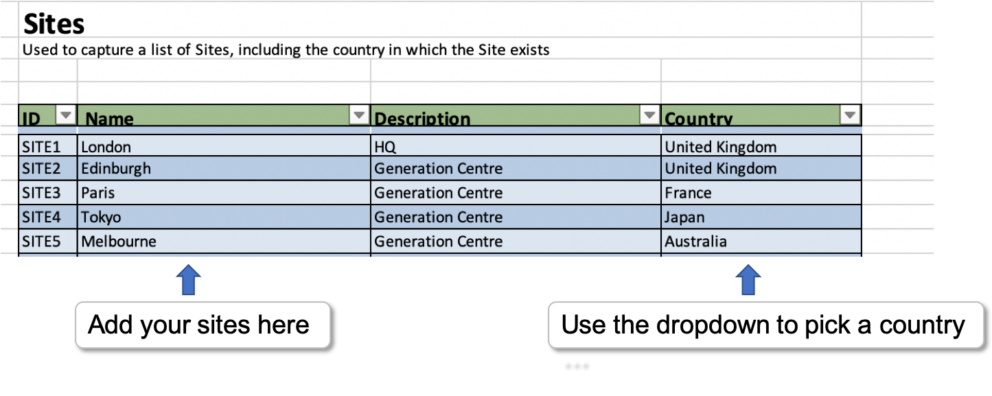
These are the sites within your organisation and will be for any location-based views and maps Examples: London HQ, New York, Osaka Distribution Centre
Business Domains

The business domains your organisation has. Examples: Finance, Sales
Business Capabilities
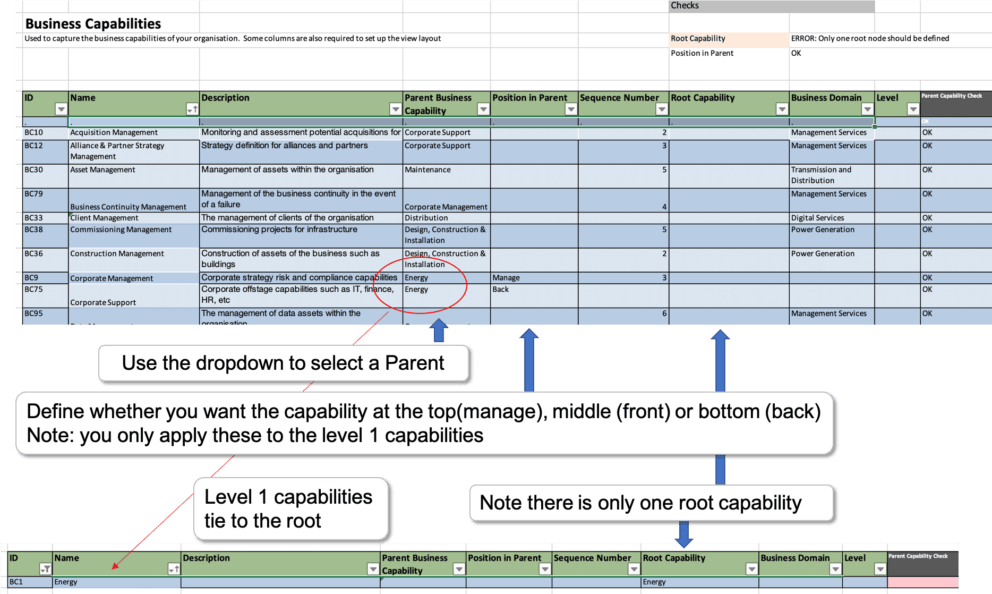
The capabilities the organisation has. This is a key foundation for your enterprise architecture. See the business capability tutorial here for more information. Note you need a single root capability – create a root capability and then make sure you replicate the name in the root capability column. You then associate your level 1 capabilities with the root name as the parent capability Examples: Fund Management, Trade Management
Business Processes
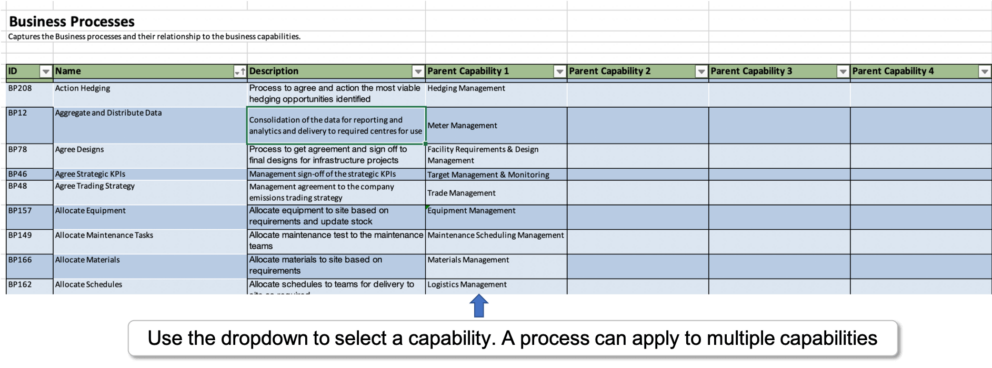
These are the logical business processes. There is no inference as to when they are performed or by which organisation. Examples: manage customer payments, create invoices.
Business Process Family
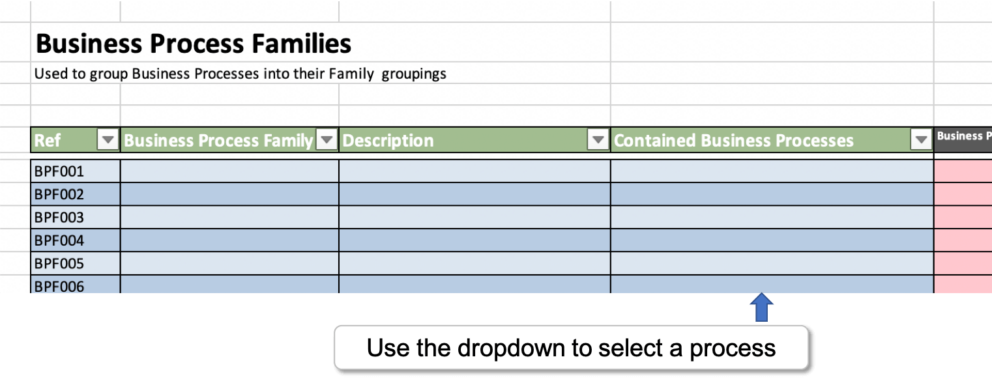
These are used to group business processes, activities or tasks that are variants of each other into a single ‘family’, allowing them to be distinct while at the same time conveying that they are related. Examples: Invoice Processing
Organisations
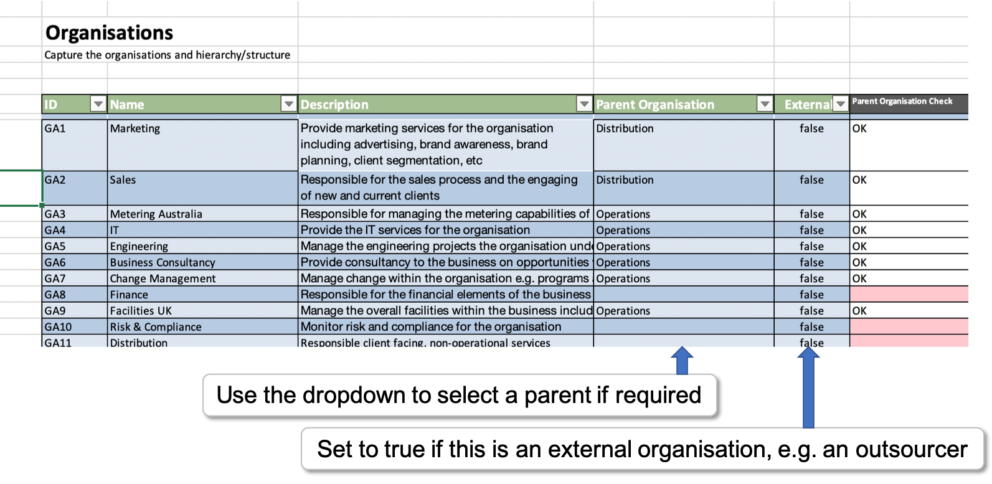
The organisations within your enterprise. Where different locations have the same organisational names, e.g. Marketing in London and in Paris, then differentiate them by adding something like Marketing (London), Marketing (Paris). Examples: Marketing, Operations, IT (Milan), IT (Manchester)
Organisation to Sites
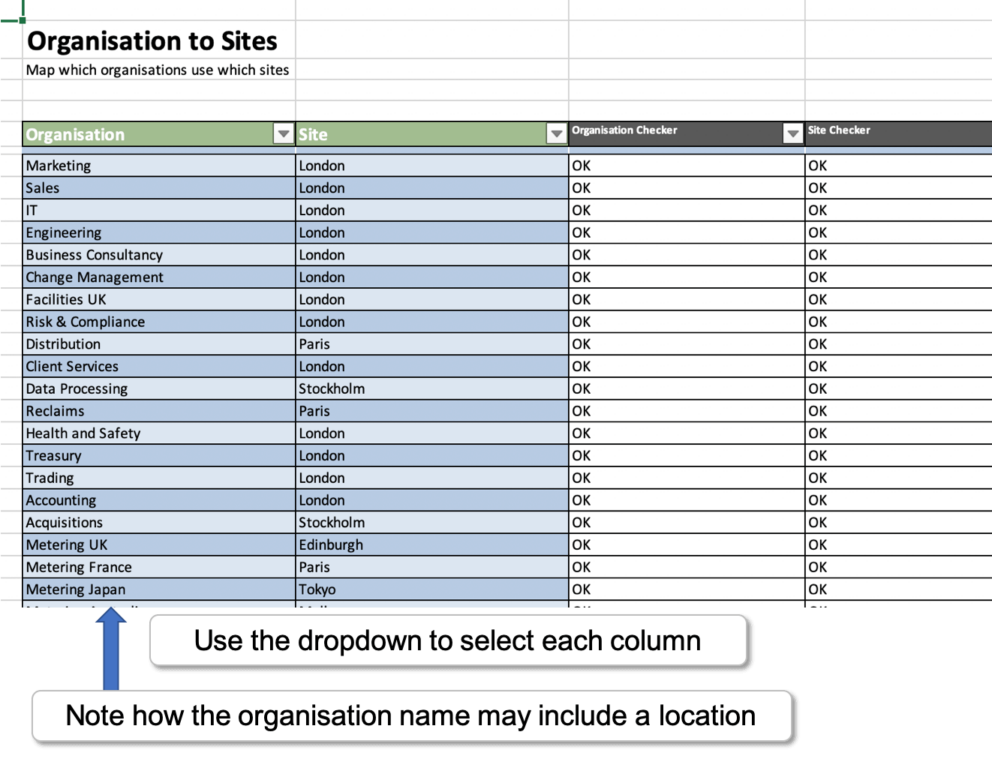
Here you map your organisations to the sites you created earlier
Application Capabilities
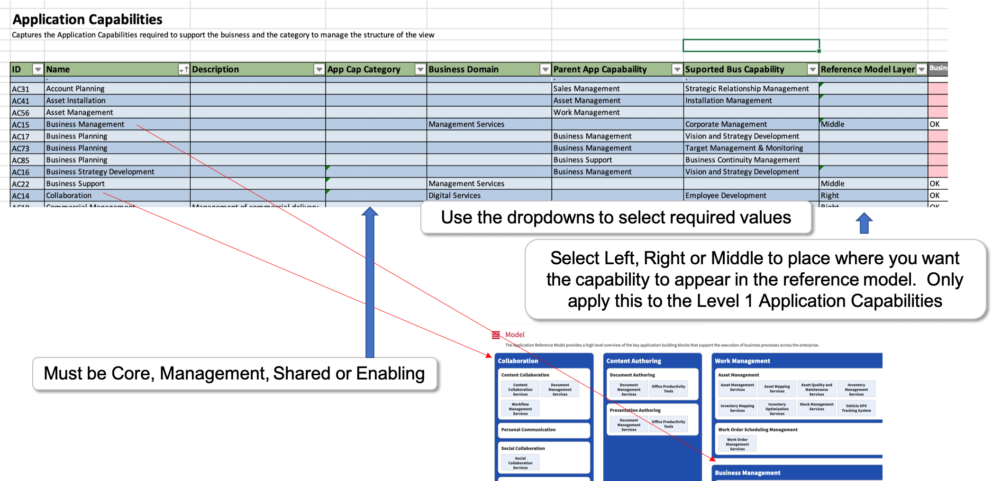
Another key foundation for your Enterprise Architecture, the application capabilities you need to support your business. Examples: Accounting Management, Trade Management
Application Services
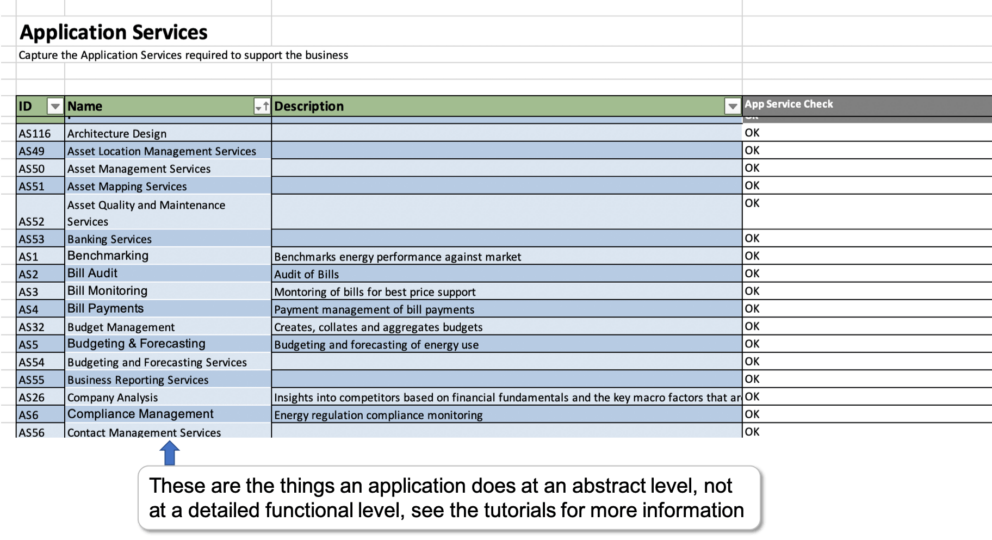
Application Capabilities to Application Services
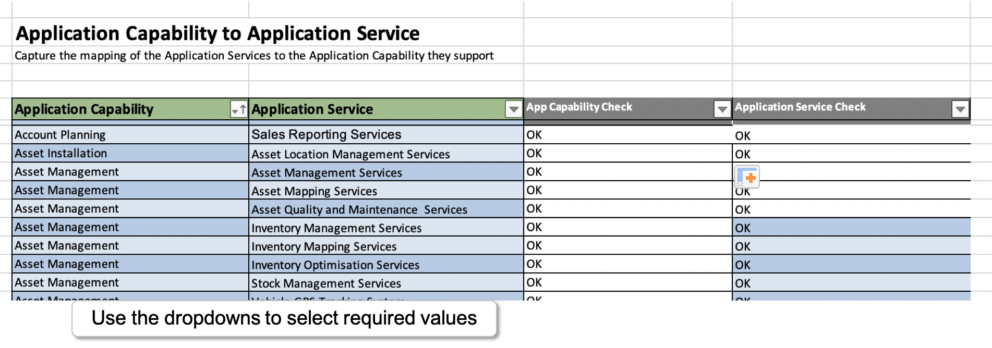
Define what services are needed to support each capability. Examples: Resource Management Capability mappped to: Time and Absence Management, Compensation Management, Payroll Management
Applications
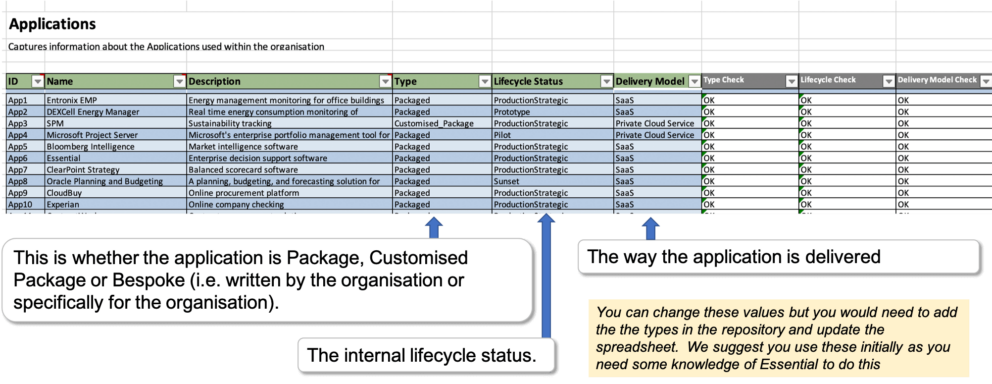
Information Exchanged
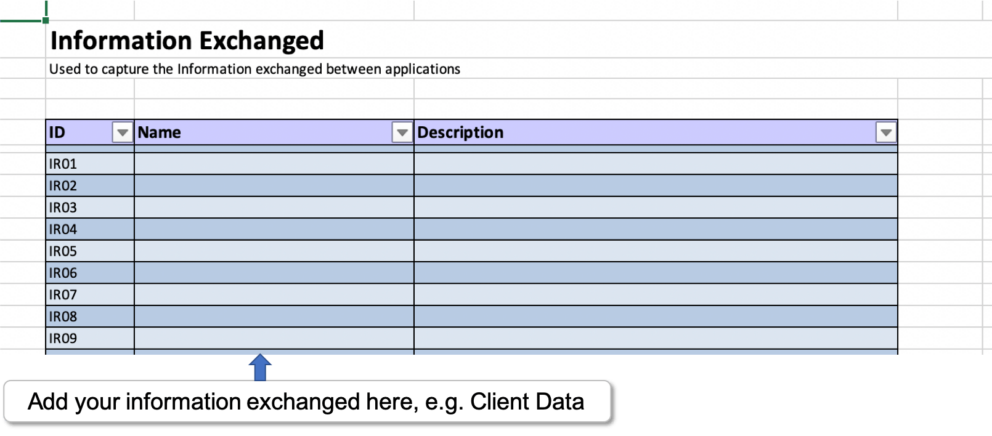
This is the types of information that are sent between applications Examples: Client Data, Trades, etc.
Application Dependencies
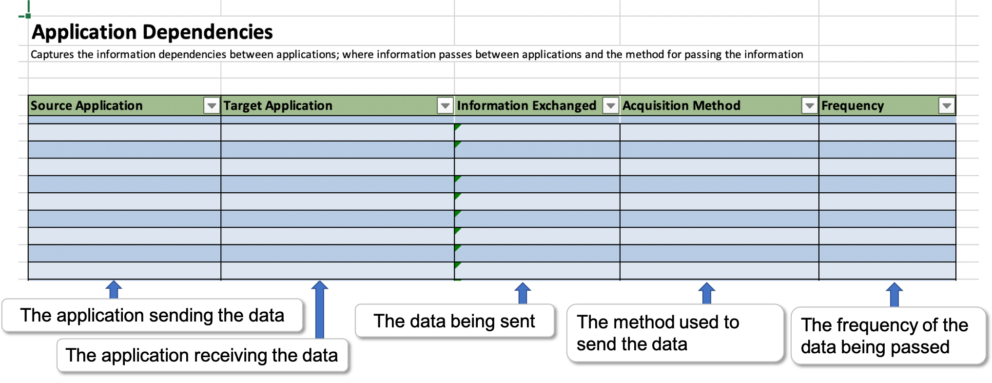
This is where you build your links between apps and show what data is flowing between them using the data from the Information Exchanged sheet.
Application to User Organisations
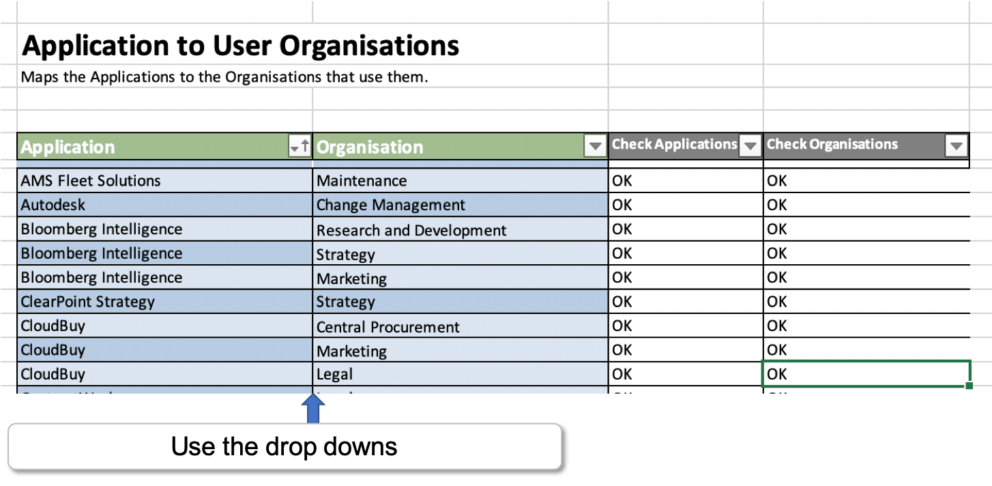
Define the users of applications.
Servers
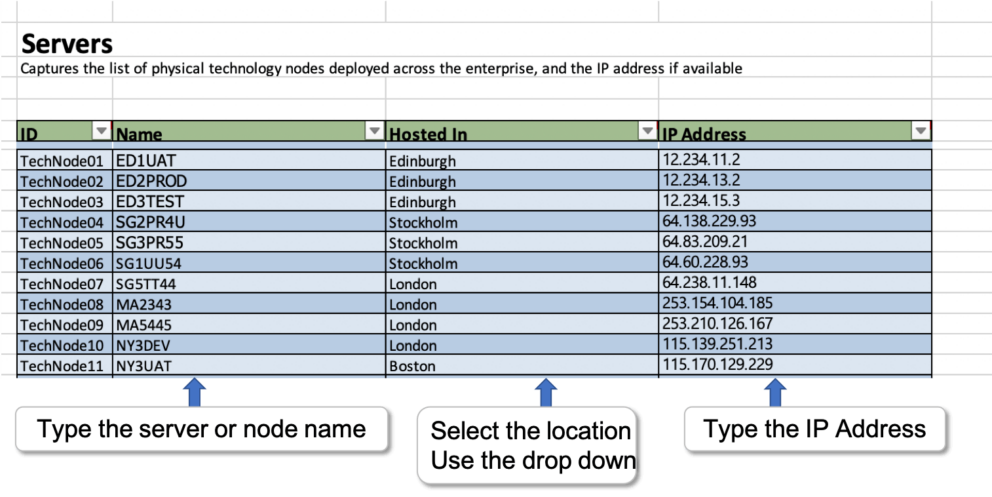
The servers in the organisation. Note this can be AWS or Azure, etc. too.
Application to Server
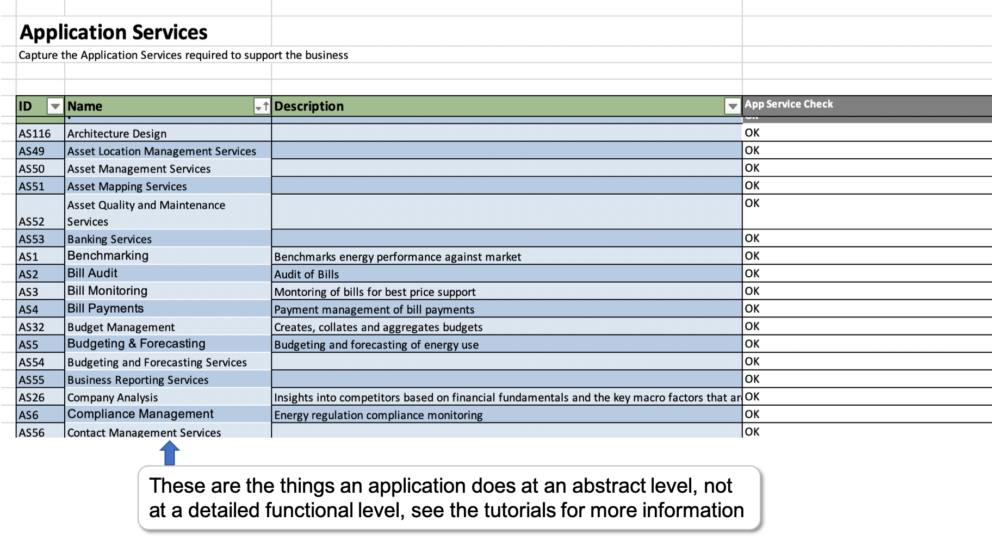
Mapping the applications to the technology nodes.
Business Process to Application Services
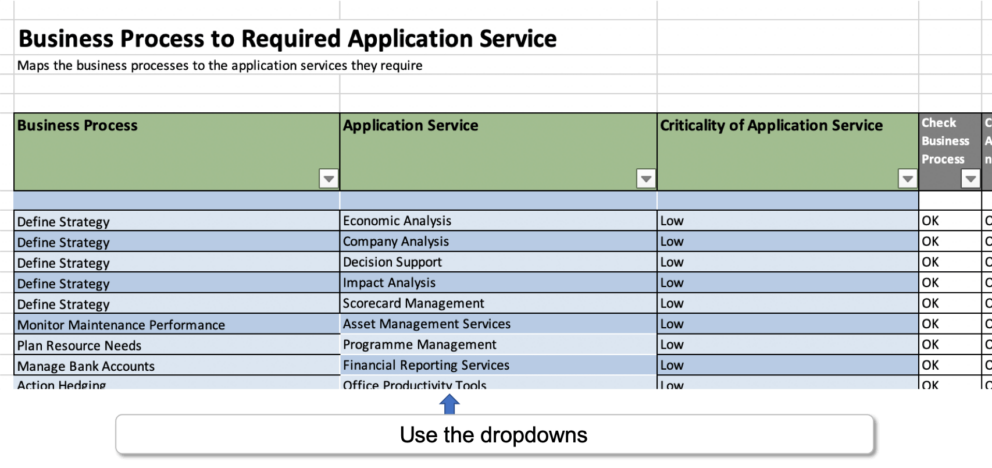
Mapping processes to the application services which can support them.
Physical Process to Applications and Services
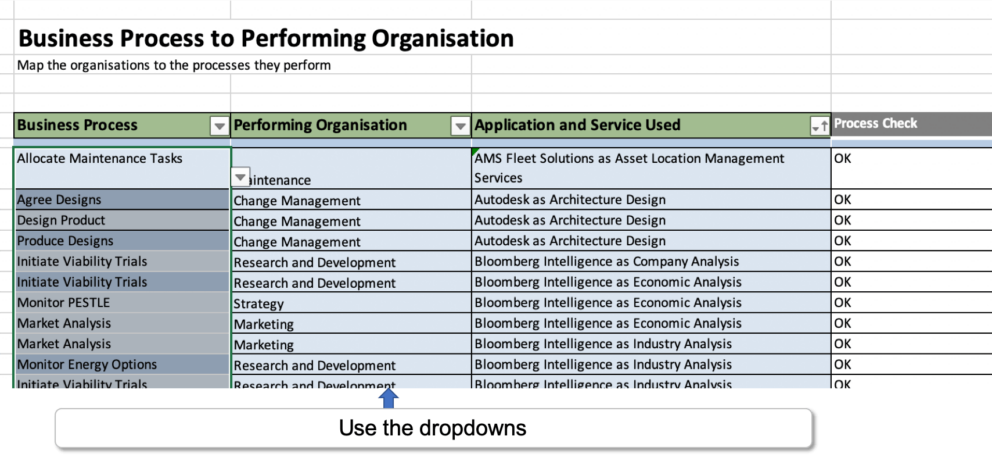
Mapping the physical processes to the applications (via application services which do support them).
Technology Domains
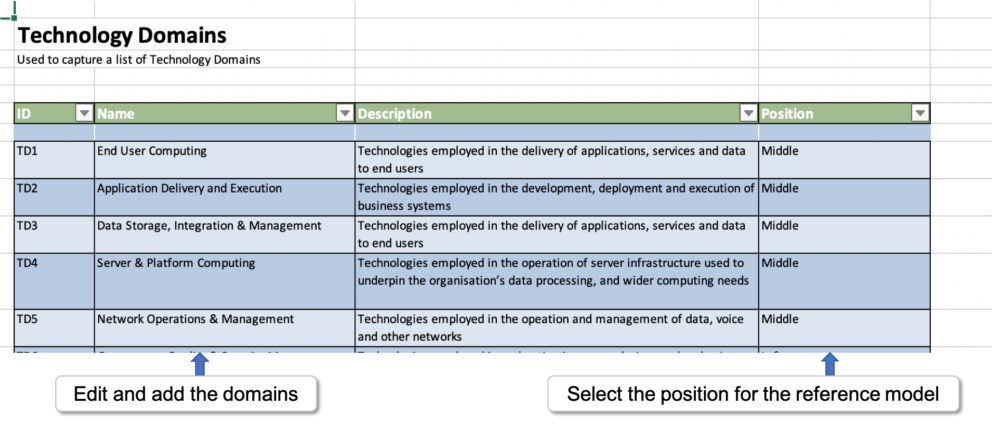
Mapping the physical processes to the applications (via application services which do support them).
Technology Capabilities
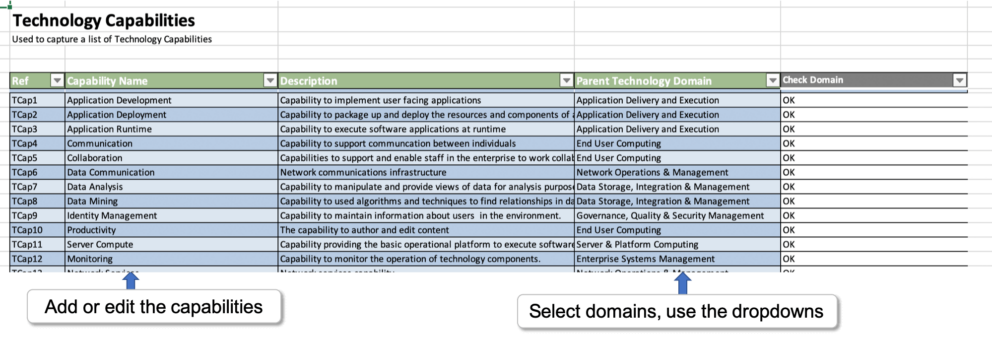
The technology capabilities you require. Note, as this is a fairly standard layer, we provide a pre-populated set of technologies, you should add to, amend or delete these. Again, this is one of the key elements of the Enterprise Architecture for identifying EA opportunities. Examples: Messaging Services, Event Management Services
Technology Components
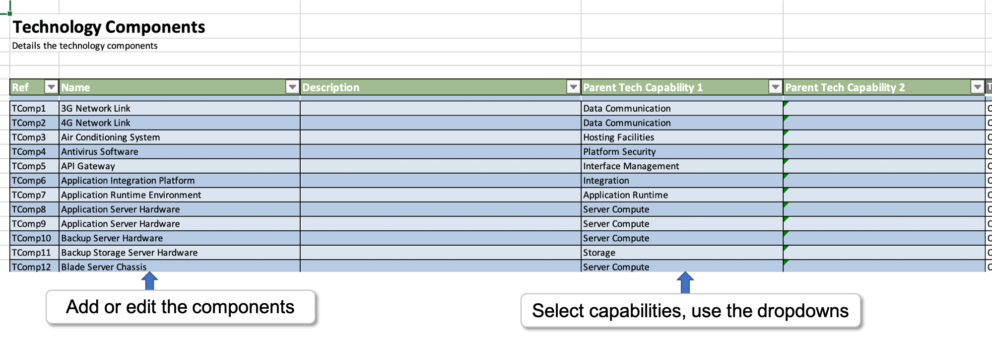
The technology capabilities you require. Note, as this is a fairly standard layer, we provide a pre-populated set of technologies, you should add to, amend or delete these. Again, this is one of the key elements of the Enterprise Architecture for identifying EA opportunities. Examples: Messaging Services, Event Management Services
Technology Suppliers
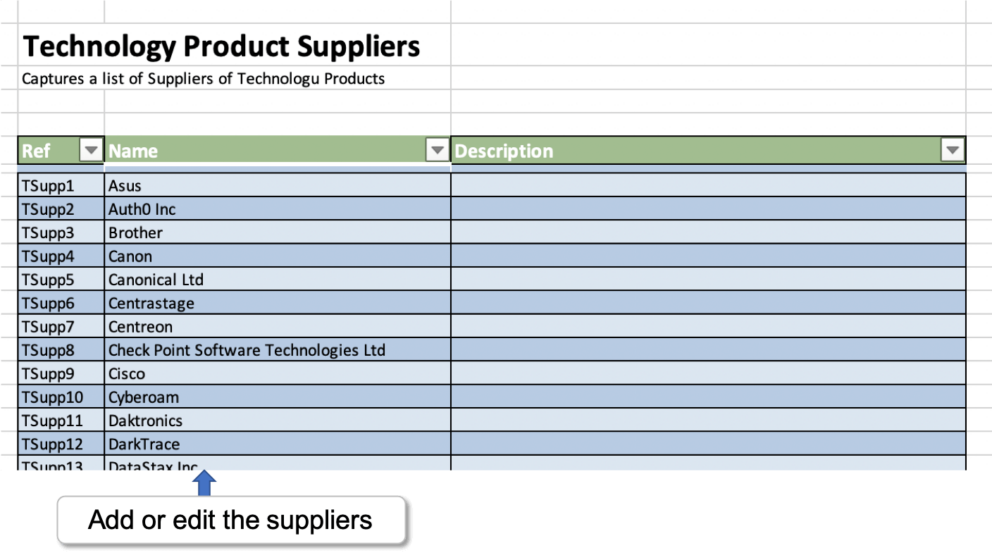
A list of technology suppliers – add to, amend or delete these as required Examples: Microsoft, IBM
Technology Products

Capture your products here. We provide a sample set, delete these out if you don’t use/want them. Examples: Apache Tomcat 9
Technology Product Families
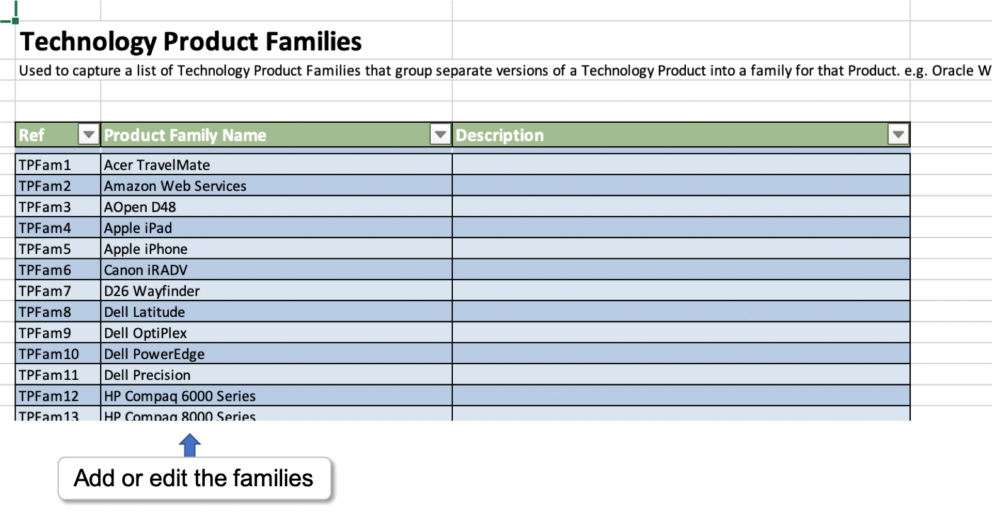
This provides a way of grouping technologies into families, e.g. Oracle Databases Examples: Oracle Products
Technology Products to User Organisations
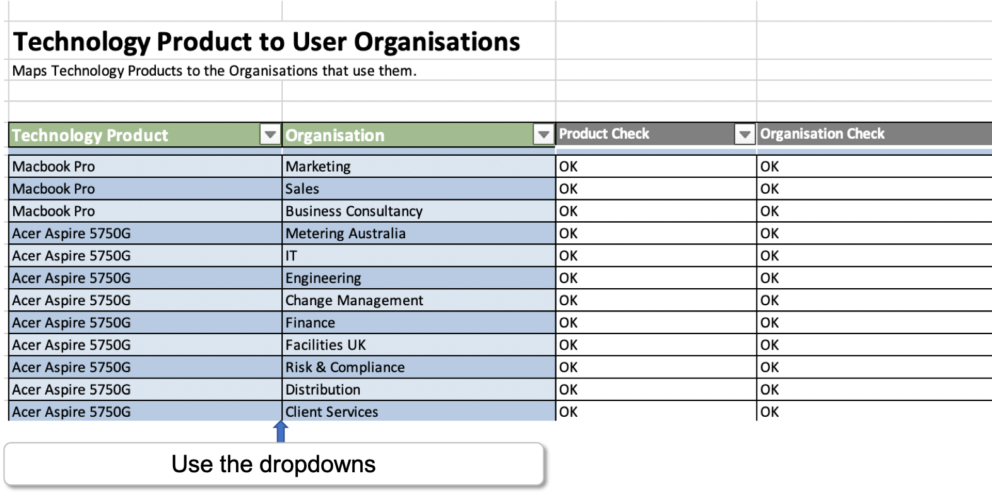
Associates technologies with those parts of the organisation that use them.
Applications to Technology Products
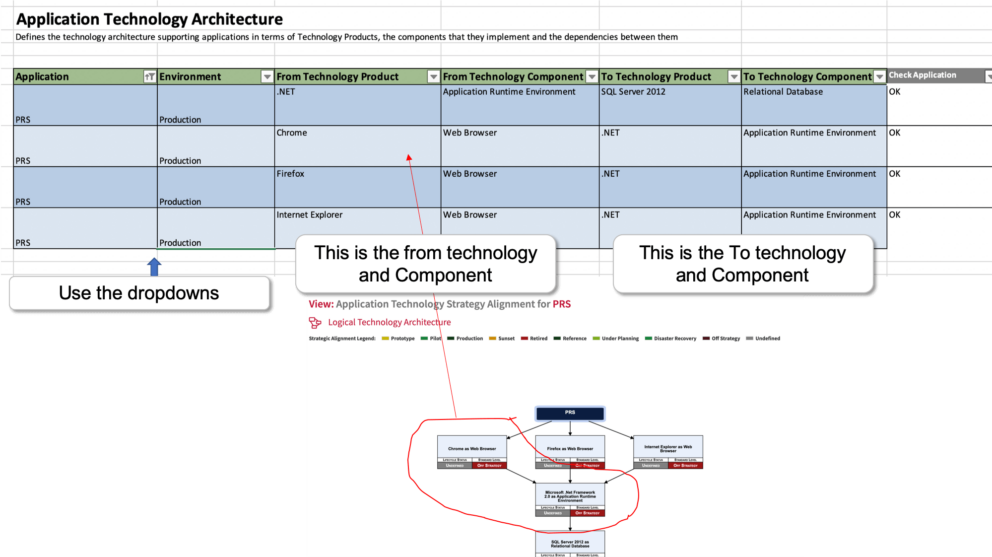
Enables you to map the technologies that applications use. This page is key for the Application Strategic Technology Alignment view and the Technology Build in the Application Summary
Data Subjects

Capture your data subjects Examples: Party, Claim, Employee
Data Objects
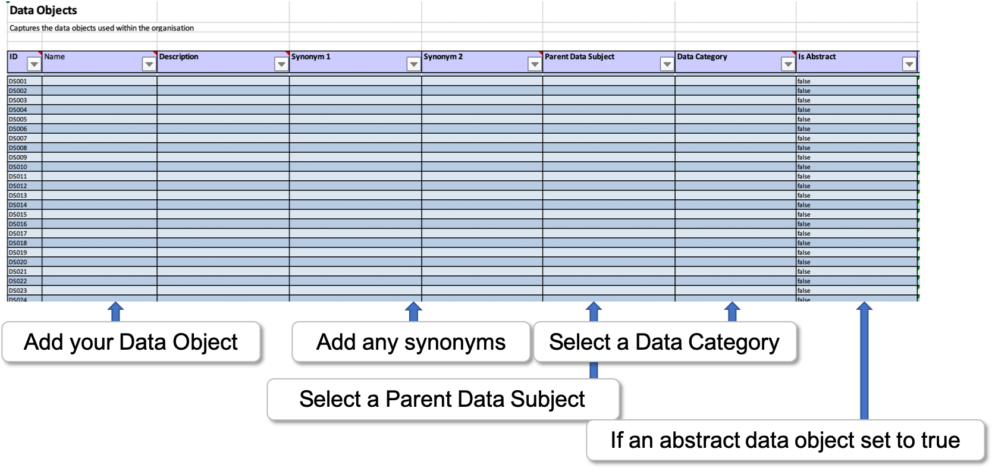
Capture your Data Objects Examples: Sales Order, Purchase Order
Data Object Inheritance
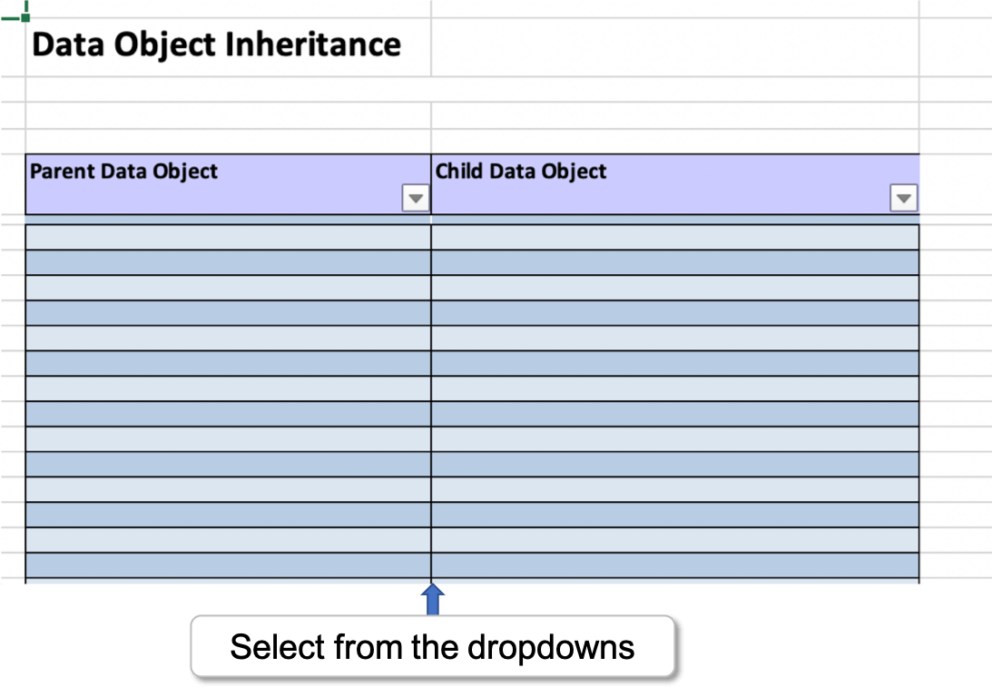
Capture your Data Objects Examples: Sales Order, Purchase Order
Data Object Attributes
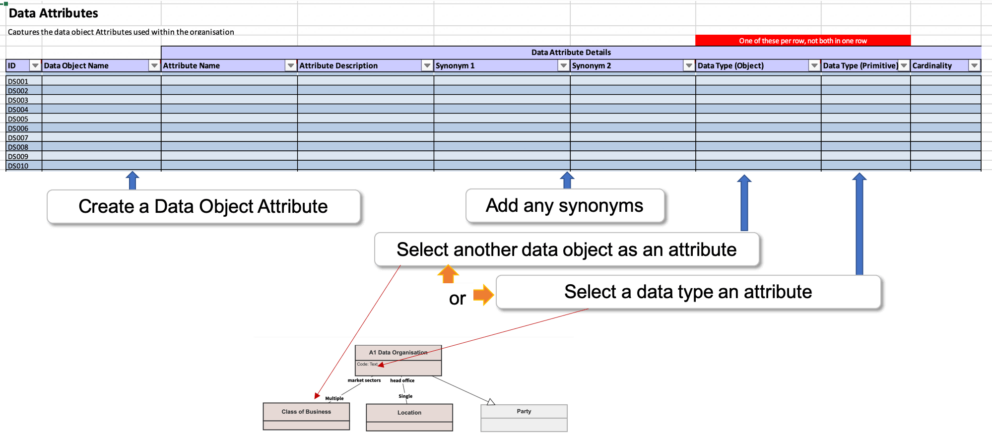
Updated 15 January 2024
